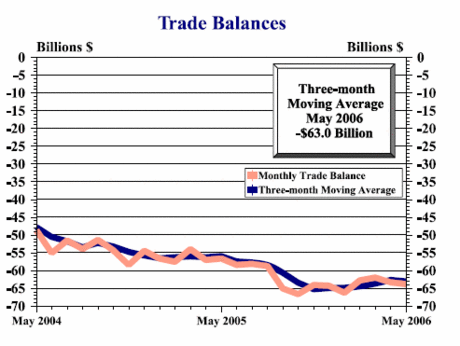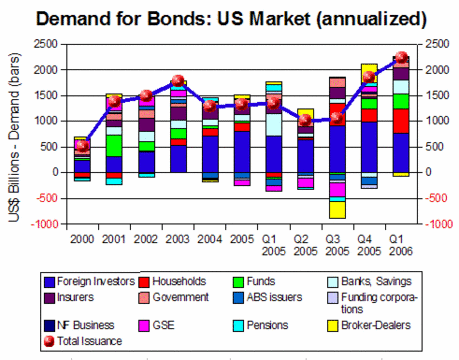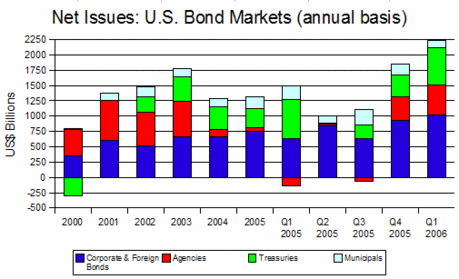Although foreign investors continue to be the largest purchasers of most types of US bonds, this sector showed less interest in Treasuries than in the past, shifting assets into short-term repurchase agreements in Q1 2006.
In same quarter, the offer of new bonds rose due to seasonal issues by the US Treasury and to domestic corporations resorting to record levels of bond issuance to finance stock buybacks.
With foreign investors moving out of Treasuries and with heavy new bond issues by the government and private corporations, bond prices fell.
Broader Support for Bond Markets
Higher interest rates and uncertainty about equity markets attracted increased flows to bonds from insurers, funds, banks, and households.
If the Federal Reserve continues to push short-term interest rates upwards and if foreign investors continue to move into short-term fixed investments, such as repurchase agreements, long-term interest rates may be forced higher.
However, considering the seasonal nature of Treasury issues in Q1 2006, the declining federal fiscal deficit, and the (perhaps) temporary nature of corporate borrowing to finance stock buybacks, it is not clear whether record levels of bond issuance will persist throughout 2006.
The following graph combines flow of funds tables for Treasuries, agency bonds, corporate bonds, and municipal bonds and shows bond issuance rising to high levels relative to demand.
|
|
|
|
Demand for Bonds: US Market: Q1 2006
|
|
|
|
|





